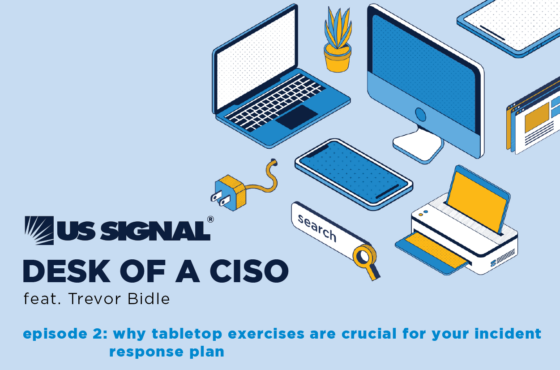Technology Solutions in Education Start with the Right IT Infrastructure
March 8, 2018
Education, Hybrid IT
Technological advances are transforming the tools used in learning environments, as well as the environments themselves. K-12 schools, colleges, universities and other educational institutions may not look much different on the outside. It’s a different story on the inside where SMART boards are replacing chalkboards and individual seating is giving way to pods of SMART desks. Video displays can increasingly be found in libraries, cafeterias and other common areas, encouraging spontaneous creativity and facilitating collaboration.
We’ve always known that learning isn’t restricted to what happens within the confines of a classroom. Technology solutions for education have taken that to entirely new level with virtual classrooms and cloud-based study spaces that enable diverse groups of students to learn and work together from anywhere.
Field trips are no longer restricted to local sites of interest thanks to virtual reality apps. With Unimersiv, students can travel anywhere from Stonehenge to inside the human mind. Or, they can download Boulevard, and visit some of the world’s best art museums and interact with famous artworks. They can even create, animate and share their own virtual worlds using Cospaces.
Virtual reality also is helping teach and enhance specific skills. That’s the case with Public Speaking VR, which helps students practice public speaking skills.
IT Infrastructure-powered Innovation
Educators and school districts alike know that they must continue embracing digital transformation if they are to prepare students for success in a technology-driven world. Numerous initiatives are underway to make it happen at both the federal and local levels. But there’s a practical side to it all that tends to get lost in the excitement of next-generation learning technologies. That’s the need for IT infrastructure side to power those technologies.
Outdated equipment, legacy systems and slow connections can’t get the job done — at least not in a way that allows educational institutions to take full advantage of the innovations. What’s needed is a robust, scalable IT environment that can accommodate current technologies and adapt to what’s coming next. It must also be capable of supporting learning environments inside and outside the classroom
The Hybrid IT Solution
A flexible, well-designed hybrid IT infrastructure provides the optimal environment for leveraging new technologies that can enhance learning as well as for powering the digital transformation of the education industry. That hybrid infrastructure encompasses on-premise assets, the cloud, connectivity, storage and built-in security.
It’s a solution that doesn’t require throwing out all existing infrastructure and starting fresh. It’s a matter of assessing what an institution currently has and plotting out a course for supplementing those existing systems as needed with secure cloud solutions and more powerful network services.
The Virtualization Component
Virtualization should be part of the equation if it isn’t already. Virtualizing server and storage infrastructure is a great way to add capacity at an affordable cost, and makes it possible to dramatically consolidate older infrastructure, save floor space, reduce energy costs, and increase the efficiency, flexibility, and reliability of the IT environment. Cloud computing builds on virtualization’s strengths, adding faster provisioning of services and enabling the IT infrastructure to quickly meet changing educational requirements.
The Network Aspect
Connectivity must be part of the solution as well. It’s not just a matter of ensuring adequate network speed and bandwidth. Security is a priority as well. Network equipment must be safe from theft, vandalism and physical hacking. Firewalls, intrusion detection, content filtering and other mechanisms are essential to keep malicious attacks at bay, monitor what data enters and exits the school network, and to restrict access to inappropriate content.
The US Signal Solution
US Signal stays on top of the technology needs of the educational institutions and the trends driving them. The team understands the budget constraints, data privacy requirements, fluctuating demand for IT resources, impact of service disruptions and downtime, and the many other issues confronting IT staffs at K-12 schools, colleges and universities.
Their expertise lies in assessing institutions’ current IT assets and helping them build out a service portfolio that aligns IT services with their institutions’ strategic objectives. They can build a secure, scalable cloud environment to accommodate a growing online learning program. They can implement a disaster recovery plan to minimize the risk of downtime and ensure learning can take place 24/7.
They can create a hybrid IT environment to help academic institutions gain the greatest benefits from their technology investments and optimize their service delivery. Whatever the technology need is, US Signal can help.
For information on how US Signal works with customers in the education sector, focuses on developing solutions that will deliver lasting value and meet the specific, often complex IT needs of educational institutions. View some of the case studies in our Resources section to learn how we’ve employed IT architecture services to help our customers. To learn what we can do for you, call 866.2. SIGNAL or email [email protected].


